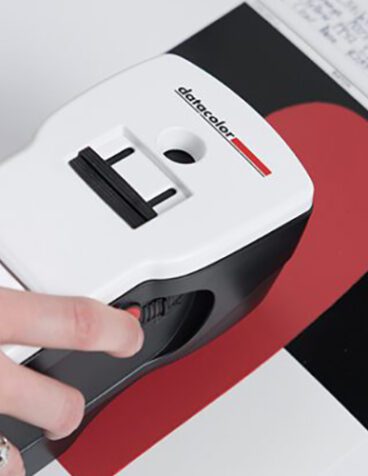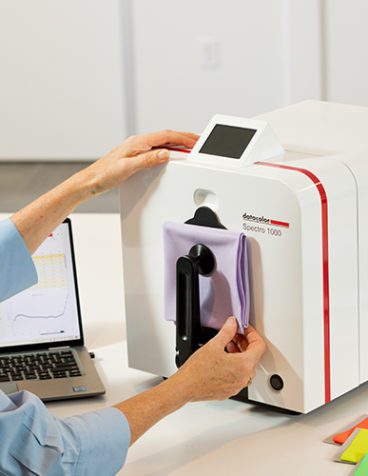This is the second blog by Dwight Davis, Datacolor Regional Sales Manager, in our series about finding the right tools for digital color management. In this post and the following ones, we’ll cover how to begin your search, making the business case for color management, the different types of color measurement instruments and more. Our goal is to help you make the best decision possible for your company’s needs.
You’ve identified the need for digital color management solutions. You’ve done the research. You’ve narrowed down your list of vendors.
But unfortunately, the biggest hurdle is yet to come: getting stakeholder buy-in. At most companies, investing in digital color tools requires sign-off from at least a few key people in your organization to gain the necessary capital expenditure approvals. They stand between the solutions you know will make your work life (and your team’s work life) easier and the actual purchase of those solutions.
Here, we’ll walk through the different stakeholders involved in purchasing color solutions and how to frame the benefits — all to help you make the case for investing in them.
Who Are the Major Stakeholders?
Often, color solution buy-in is required from three or four different people:
- The company’s owner or CEO
- Finance leadership
- Quality and production management (if you’re reading this, there’s a good chance that’s you)
- In some cases, technology leadership
You know how critical it is to be as efficient as possible with your day-to-day color operations. You also know that implementing digital color tools can streamline your entire color control process, significantly reduce turnaround times and waste, and increase productivity. The next step is convincing these stakeholders that investing in the right color solutions will reduce customer returns caused by color variation.

The Biggest Hurdle to Getting Stakeholder Buy-In
In many cases, stakeholders understand the need for a color control solution only after there is a major issue with a customer, like a return of a large order from a key account. In these types of situations, stakeholders are forced to resolve the situation quickly and with little knowledge of the best solution for their company and the customers. This leads to quick fixes instead of long-term resolution of the fundamental color issue facing the company.
The good news: knowing there’s a need is a great place to start. Once you’ve done your research on available solutions, you can present the options to stakeholders with clear knowledge of how your company will benefit from the investment. Thankfully, with color management tools, that return happens quickly. Here are some ways instruments and software easily pay for themselves:
- More work in less time: Color matching software reduces the time it takes to accurately match a color. That means colorists and lab workers will get more tasks done in the same amount of time.
- Reduction in material waste: Whether you’re working with pigments, dyes, fabric or plastic, inaccurate color creates a lot of waste. With the right software and hardware, you get more first-shot matches as well as the ability to store and use incorrect colors as work-off and recharacterize them to use in future formulations.
- Less back-and-forth: Digital color tools dramatically improve the customer-supplier communication and acceptance process so you’re not spending weeks going back and forth on colors. When color communication goes digital, more jobs can be done (and approved) at the same time.
- Improved customer satisfaction: Speed and accuracy equal repeat business. When you can match a color for your customer in one or two tries, it shows the customer that your company prioritizes speed, efficiency and accuracy above all. In other words, you’re the best supplier at what you do.
- Create sustainable processes: Reduce waste and conserve materials by optimizing formulations, digitalizing color samples to eliminate physical sample shipments, hypothesizing and testing recipes before going to full production, and implementing recycle features that allow you to reformulate and reuse rather than dispose of off-color recipes.
“There is cost involved to match one color recipe – we calculate all the costs – materials, overhead, packaging, etc. – and depending on the location, the cost can be quite substantial. If we need to match the same color different times at different stores around the world, the cost can be up 100 times that – and it would stay outside of the central database. Now (with Datacolor MatchPigment) we can generate and handle all the data centrally in a higher quality-controlled environment.”
Parag Akre, Global R&D Color Director, PPG
Want to take your case a step further? This ROI calculator lets you input details about your own company’s color operations to see how investing in digital color solutions can make all the difference.

How to Make the Strongest Case with Each Stakeholder
Even with an understanding of the return on investment, making the case with the stakeholders above can be a challenge. After all, they’re often focused on higher-level strategy and business goals — not technical color operations. And that’s how it should be. However, there are some simple ways you can show the value of color solutions that should resonate with company leadership.
It starts with understanding what’s most important to each stakeholder. While each benefit above is valuable, some matter more to different decision makers.
The company owner or CEO:
- Their focus: increasing revenue
- Your response: Investing in color technology leads to increased efficiency, which gives your team the ability to complete more work for more customers. Now, your sales team can go out and sell more because your lead time went from days down to hours
Finance leadership:
- Their focus: Reducing cost as much as possible
- Your response: Implementing digital color management solutions directly drives down material costs and labor costs and results in a dramatic increase in production speed.
Technology leadership:
- Their focus: Less downtime, fewer equipment costs over time, less equipment maintenance
- Your response: Increased efficiency leads to less need for other instrumentation or equipment, less maintenance and less downtime. The color company you work with should have excellent service and support, which reduces the workload for your IT managers.
For quality and production management, the goal is overall efficiency, and each of the above helps make this a reality. When you have the right tools at your disposal, it helps stakeholders achieve their goals, too.

Datacolor Can Help You Make the Case for Color Solutions
Getting stakeholder buy-in can feel like an uphill battle, no matter how clear the benefits are to you. For over 50 years, our team has helped companies across the world find the right solutions and make a compelling case for investing in them.
We’ll also work with you to ensure everyone involved in color operations has a uniform process around color, from R&D to production to quality control. We work as consultants, implementing your new color solutions, training personnel and helping maintain the accuracy of your equipment and software.
Over time, our customers find that what once felt like an investment now feels like a solution that’s paid for itself many times over, and one they can’t imagine doing business without. If you’re already working with a member of our team, let us know how we can help you make the case with key stakeholders. And if you’re just starting to consider digital color tools, connect with our team to see how we can help you streamline color operations.








